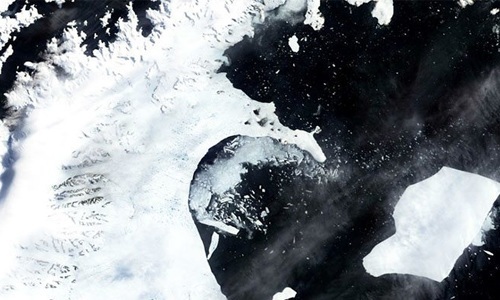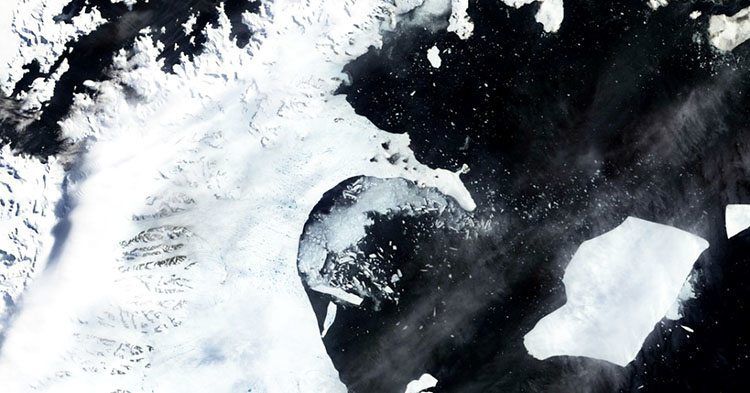
Melting of Antarctic Ice Shelves Could Double by 2050, Dramatically Increasing Sea Level Rise

If countries act fast to reduce global greenhouse gas emissions, according to new research, there is still time to curtail the most cataclysmic Antarctic ice melt.

However, according to a study published Monday in the journal Nature Geoscience, if fossil fuel consumption maintains its current rate, Antarctica may experience a widespread collapse of its ice shelves, which could spur significant sea level rise.
Researchers employed a combination of satellite observations of ice surface melting and climate model simulations under scenarios of intermediate and high levels of greenhouse gas emissions. Under both emissions scenarios, by 2050, the models indicate a “strong potential” for the doubling of surface melting of Antarctica’s ice shelves, which are the “floating extensions” of the continent’s ice sheets.
When extended to 2100, the trajectories diverge, with the more intense scenario showing “ice sheet surface melting approaches or exceeds intensities associated with ice shelf collapse in the past” and the reduced-emissions scenario showing “relatively little increase in ice sheet melting” after 2050.
“The data presented in this study clearly show that climate policy and therefore the trajectory of greenhouse gas emissions over the coming century, have an enormous control over the future fate of surface melting of Antarctic ice shelves, which we must consider when assessing their long-term stability and potential indirect contributions to sea level rise,” said Clark University Associate Professor of Geography Karen Frey, who contributed to the study along with researchers from the Woods Hole Oceanographic Institution (WHOI), Institute for Marine and Atmospheric Research at Utrecht University, and Royal Netherlands Meteorological Institute.
Luke Trusel, lead author and postdoctoral scholar at WHOI, added that the results “illustrate just how rapidly melting in Antarctica can intensify in a warming climate.”
As WHOI explains, ice shelves have a “door stop” effect on sea level rise, as they slow the flow of ice from glaciers and ice sheets into the ocean, where it melts.
The study follows a report last month which found that the Antarctic ice sheet would melt completely if all of the world’s coal, oil and gas reserves were extracted and burned. Another, put forth by former NASA Scientist James Hansen this summer, argued that glacial melting will “likely” occur this century and could cause as much as a ten foot sea-level rise in as little as fifty years.
All of this comes in the lead-up to the United Nations climate talks in Paris beginning Nov. 30, during which international delegates are expected to cement an international climate agreement. However, countries on the front-lines of the most pressing climate impacts, such as sea level rise, are concerned that the pact will not go far enough to stem the worst effects of global warming.
Check out this interactive map that allows you to see the potential sea level rise on cities, depending on how the world acts on climate:
YOU MIGHT ALSO LIKE
NATO: Climate Change Is Significant Security Threat and ‘Its Bite Is Already Being Felt’
House Passes Bill Lifting Oil Export Ban, Despite Veto Threat
Cities Hold the Key to Ensuring a Climate Safe World
Jared Leto Takes You on a 360º Virtual Tour to See First-Hand Effects of Climate Change

 233k
233k  41k
41k  Subscribe
Subscribe 